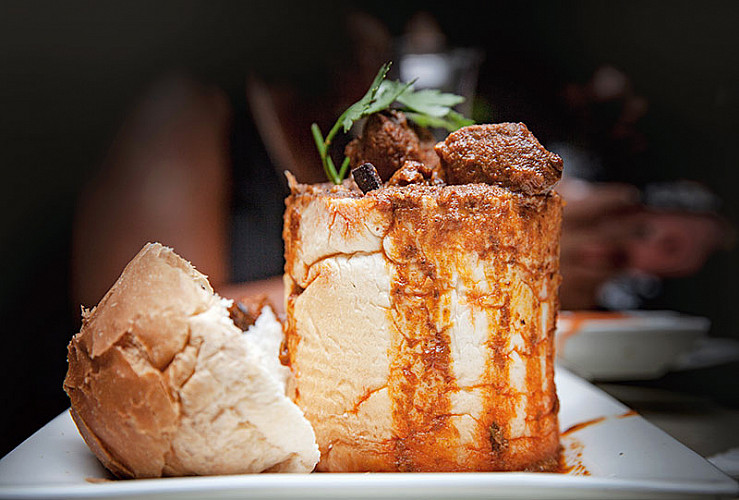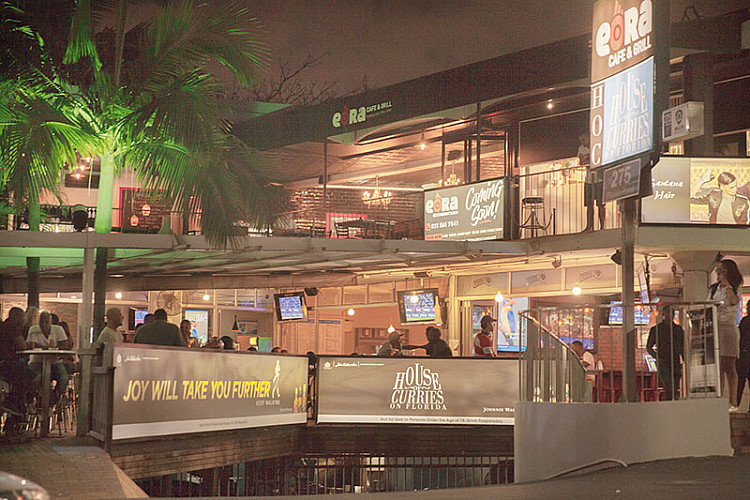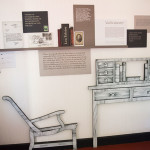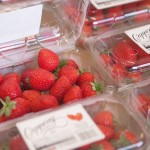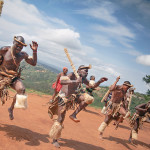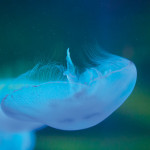Why South Africa’s Surf City Will Grow On You
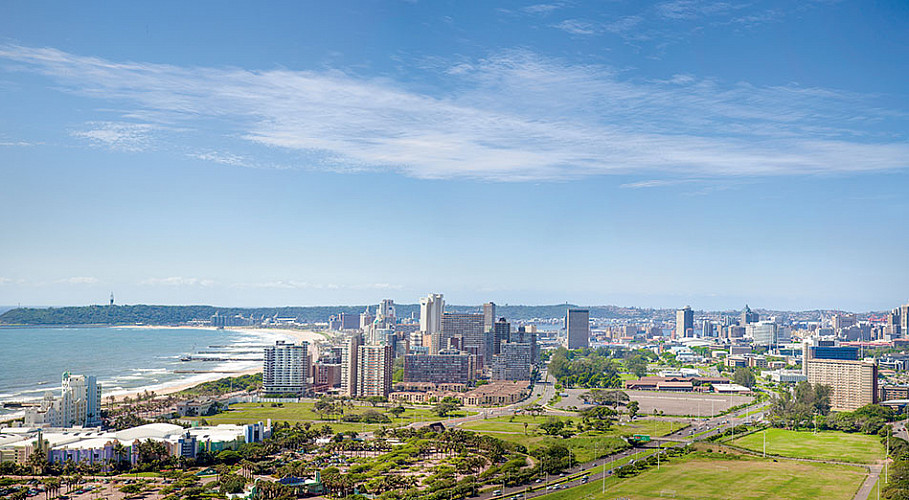
“You will love Durban,” he promised, as he greeted us. “It’s the best place to live in the world!” It was with a mixture of anticipation and trepidation that we had set out on our long flight, which included an overnight stop in Dubai. Everyone we had spoken to, including family friends who now live in Durban, warned that we should keep our car doors locked, hold on tightly to our belongings while on the street, and not venture out alone after 6 p.m. — especially in deserted or poorly lit areas. But Stuart Nairn, our gentlemanly guide who gamely took on the task of ferrying us to and from all the destinations on our itinerary, summarily dismissed the notion of his city being unsafe for first-time visitors like us.
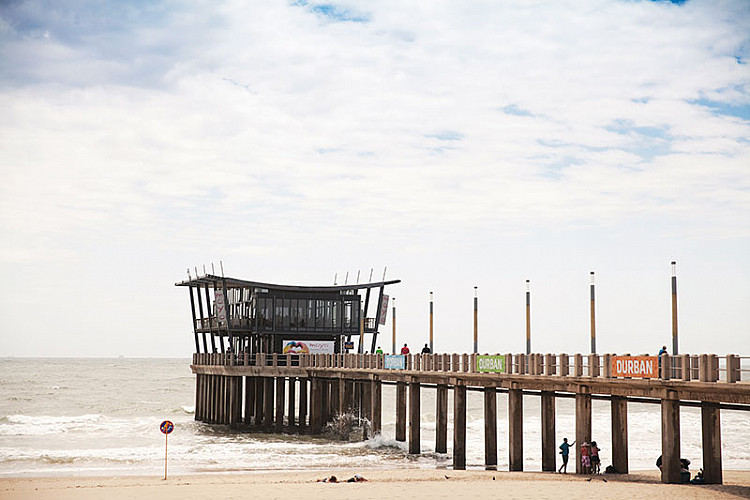
The sense of belonging that ties together all the colourful strands of culture and history that make up the exotic tapestry of South Africa is evident. Like many other European settlers, the Nairns hail from an ‘unforgiving’ part of Scotland that gives the family its name. We learn that our guide’s Scottish ancestors fell in love with the sunshine and decided to jump ship to pitch their tents here while they were en route to New Zealand to engage in bridge-building for the British empire, then on a colonising spree. That was way back in the 1800s, so we essentially travelled across town with our own slice of history.
As soon as we stepped out of the King Shaka International Airport and into his car, the magical journey started. Flanked by green carpets of sugarcane fields, we flew across the smooth asphalt towards the city — reaching our perch in Suncoast Towers overlooking the Golden Mile in less than the stipulated 45 minutes. The view from the top is entrancing: miles of sandy beaches are lashed by waves in the distance, while the swimming pool and amphitheatre at the entrance to the food court and casino beckon the eye enticingly. On weekends, this is a picture of relaxation, with picnic tables set up under cheerful umbrellas fringing the beachfront, and skateboarders whizzing up and down. Street art, performances and cycle tricks are other sights to behold on the pedestrian-friendly promenade.
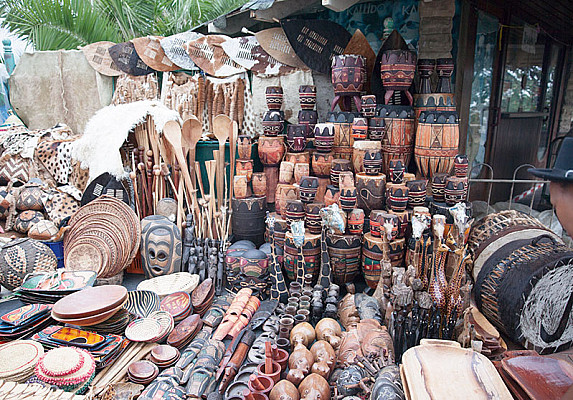
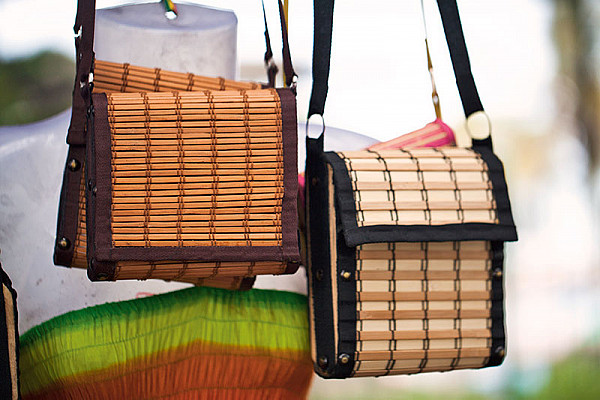
Strolling along the sidewalk towards the Village Walk at the other end of the Golden Mile, which is punctuated by the not-to-be-missed uShaka Marine World, we browse through the handicrafts sold by the local Zulu people. What’s heart-warming is that, whether or not you buy their wares, you are invariably hailed by their solicitous greeting: “How are you?” Of course, the intricate beadwork and brilliant colours of the jewellery and clothes on display will charm you into loosening your purse strings.
Coming from Mumbai, where the climate is similar but the seaside attractions are not, Durban with its year-round summertime is a home away from home — with a difference. Aptly known as Surf City, it boasts the highest concentration of Indians outside India. We expected to rub shoulders with our fellow countrymen and women; instead, we met South Africans of every hue, hailing from different countries and continents. All of them greeted us like we were long-lost cousins — whether it was the lady who was a guest of the women’s group on our bus tour of the city, the charming Englishwoman who visits Goa regularly and plans to come to Kerala soon, or the Pakistani lady who hugged us affectionately when she heard we were from India.
By the time we realised that the tourism promotional campaign for the city is: ‘Durban — the warmest place to be’, we were ready to vouch for it despite the cool and, at times, chill evening breeze. For it’s not the climate that makes it so, it’s the warm-hearted people. Yes, we were accosted by a well-dressed woman begging for her next meal when we took a stroll towards the beach, and were startled by a shabbily-dressed young man tugging at our sleeves — yet we must say that Durban is as safe as any city could be. Our trepidation was unfounded, and I must admit that I soon fell head over heels in love with it!
Like any city appreciated by tourists, Durban grows on you through experiences of its people, its places, its cuisine and its culture. Set on the east coast of South Africa bordering the Indian Ocean in the province of KwaZulu-Natal, it is the country’s third-largest city and its busiest port. Originally called Port Natal, it was founded by British settlers who brought Indian labourers to work on the sugar plantations that led to the prosperity of the city and its people. Where Indians are concerned, there’s an invisible but strong thread that binds us to the city’s heritage. The Father of the Nation, who spearheaded India’s non-violent resistance movement, is revered as the Mahatma here too.
Durban is where the seeds of Mohandas Karamchand Gandhi’s political activism were sown in 1893. When he became a barrister, an assignment brought him to this city populated by Indians hired as indentured workers by the British. He was engaged by a local Indian trader to fight a commercial dispute — but when he got a taste of the racial discrimination faced by Indians, it triggered a bigger battle for freedom. That struggle is as much part of Indian history as it is of South African, so a visit to the landmarks associated with it would be interesting.
As most cities in India do, Durban has a Mahatma Gandhi Road too; but it would be wise not to venture there on foot. Once known as Point Road, the two-mile-long stretch that connects the downtown beach precinct to the mouth of the harbour has acquired a reputation for illicit activities related to sex and drugs. A decade ago, when the South African government decided to honour the people who had contributed to the fight for freedom and human rights, the renaming of this street was greeted with a public outcry by South Africans of Indian origin; though some of the local population hoped that giving it Gandhi’s name would turn the tide for the notorious red-light district peppered with sex shops.
In the vicinity is the Durban Point Waterfront, an exciting addition to the city — especially its uShaka Marine World, a family entertainment zone with a number of restaurants and shops in addition to a fun water park and fascinating sea life. The shops at the Village Walk still close early, though, thanks to the reputation of its neighbourhood. Due to the ideal surf conditions, Durban’s beaches are a much sought-after holiday and tourism destination. On the anvil are a small craft harbour and a new offshore marina that promise to offer a ‘Monaco and Riviera’ lifestyle to the rich and famous. Apart from ultra-luxury seaside residential apartments on the harbour’s edge, the development will boast pavement cafes, theme restaurants, retail outlets and a 30-storey five-star hotel — making it a tourist haven.
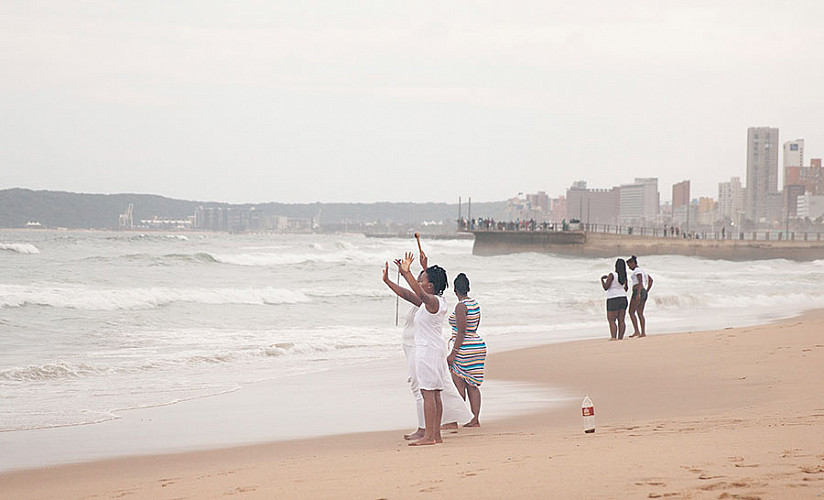
This would be a welcome extension to the Golden Mile, a stretch of beaches which runs from South Beach (where uShaka Marine World stands) to the Suncoast Casino & Entertainment World in the north. Sun worshippers, swimmers, surfers and sand sculptors who create architectural wonders can be seen on this wide stretch of golden sands protected by lifeguards and shark nets, while trendy restaurants and cafes overlooking the beach and the Indian Ocean provide the much-needed fuel to the ‘motors’ of those engaged in water sports.
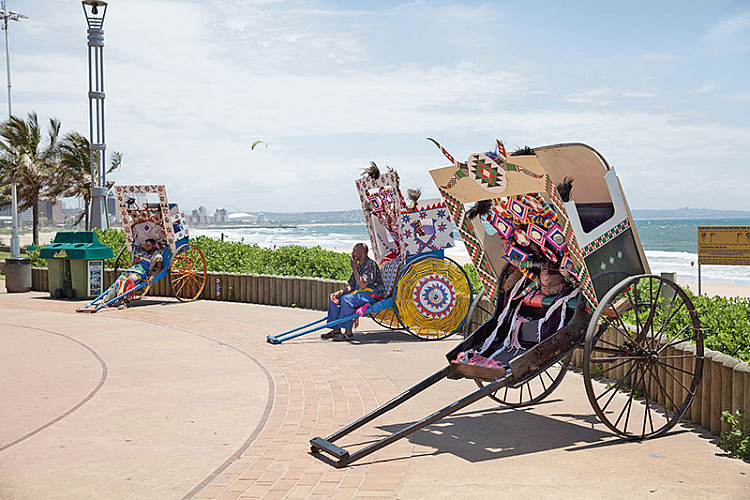
There are just a handful of registered rickshaw pullers left on the Golden Mile today — so if you see one, make sure you take a ride. It will be worth every penny you spend. This is a unique tourist attraction, as the rickshaws and headgear adorned with beads and other decorations speak colourfully about the Zulu culture. You may also be tempted to pick up beaded souvenirs from the locals who sell their wares along this six-kilometre stretch.
In Zulu, Durban is called eThekwini, from itheku, which means ‘bay/lagoon’. The modern city dates back to 1824, when around two dozen men under British Lieutenant F. G. Farewell arrived from the Cape Colony and established a settlement on the northern shore of the Bay of Natal, near today’s Farewell Square. During the days of apartheid, the Zulu people were denied South African citizenship and attempts were made to confine them to the self-governing homeland of KwaZulu — which is now a part of the KwaZulu-Natal province. But today, the Zulu people make up around 22 per cent of the South African population that has gone up to over 45 million.
Not much is known about the history of the earliest inhabitants of this region, and the very first mention of it in recorded history was by Portuguese explorer Vasco da Gama, who found his way here during his search for a route from Europe to India — yet another connection between Durban and India. He landed on the KwaZulu-Natal coast during Christmas in 1497, which explains why he named the area Terra do Natal, or ‘Christmas Country’ in Portuguese.
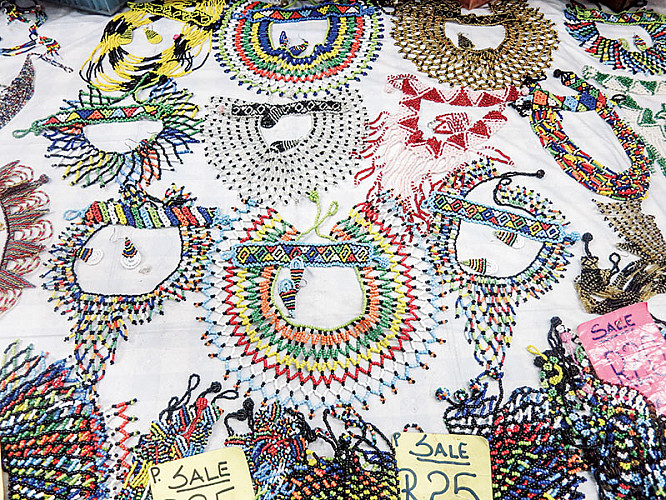
The largest ethnic group in South Africa, the Zulu tribe is well known for beadwork and carving. The Zulu, meaning ‘people of heaven’, treasure their heritage and are friendly and hospitable. Their long and violent history over the past two centuries has been immortalised in films such as Zulu and Shaka Zulu. Currently, the president of the Republic of South Africa, Jacob Zuma, is Zulu.
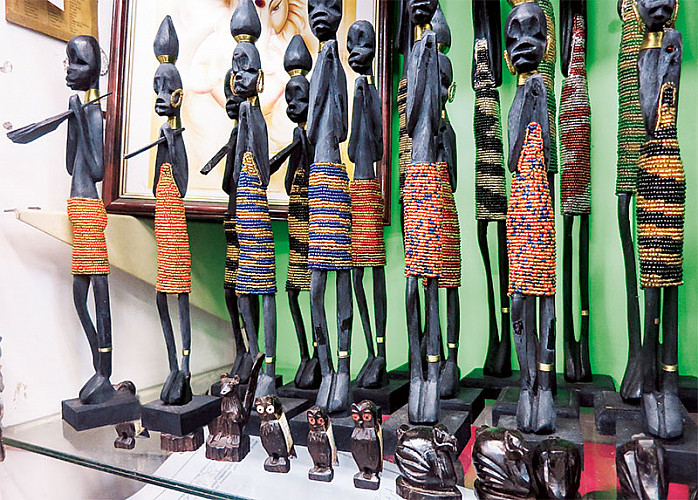
While the arts and crafts of the Zulus are sold by the tribal folk on the beaches and promenade, it is the Indian settlers who are best known for their trading skills when it comes to the traditional arts and crafts of Durban. There are malls like the Gateway Theatre of Shopping, but it is the Indian shopkeepers at the Victoria Street Market who attract most buyers of souvenirs.
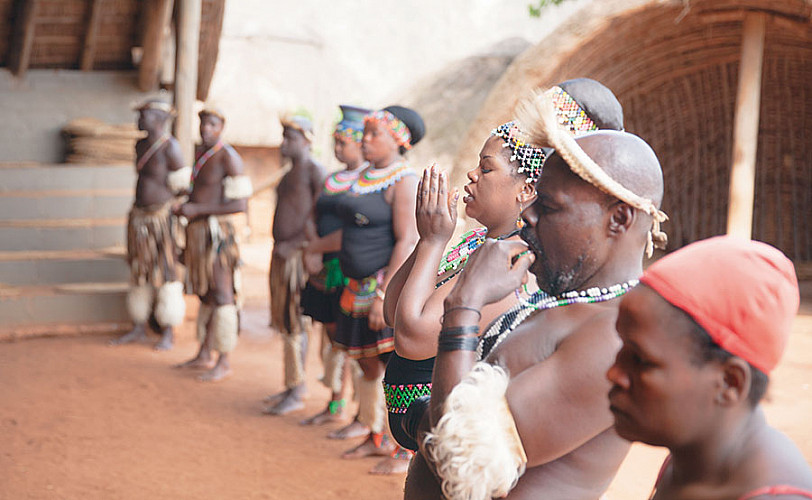
Zulu beadwork is unique, with its bright colours and intricate patterns decorating clothes and accessories. Ladles and salad spoons with handles carved with animal figures as well as tiny replicas of Zulu tribals and their traditional huts make good gifts for family and friends back home.
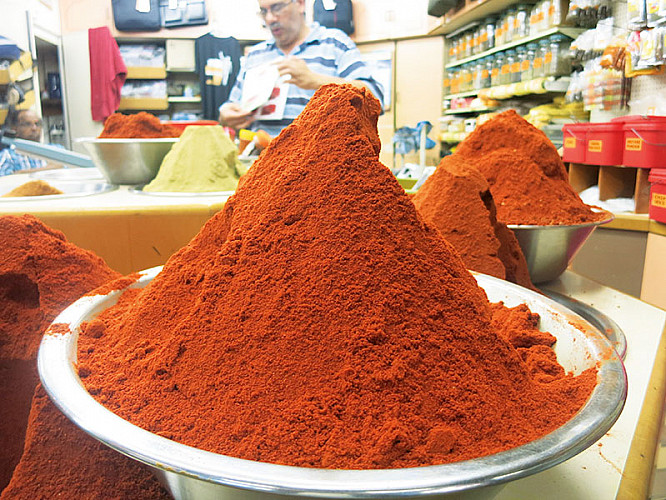
For those who prefer to take home a taste of Durban, there are unique masalas and sauces to be bought. A combination of the Portuguese peri-peri and Indian spices could help you recreate the dishes you have sampled here. And the best place to buy them, of course, would be the Victoria Street Market.
Indian settlers have also influenced the food of Durban, and it’s not unusual to see white people flocking to places that serve curry and roti (a large roti stuffed with your choice of curry). An unusual dish that’s probably unique to Durban is a chicken and prawn curry — a fusion of the marine flavour of prawns with the meatiness of chicken in one simple, spicy dish that will have you going back for seconds. Apart from curries, the coastal city has a range of seafood to offer — cooked European-style and served with spicy sauces. But fresh sardines on toast, dished up simply with onions, are a hot favourite. The more adventurous among the non-vegetarians may be game for some crocodile or ostrich meat, but must definitely try the Zulu take on barbecued meat.
A township experience is not to be missed, both for the tender, hot and delicious meat and for the thumping music set to African rhythms that will get you on your feet.
A good way to get your bearings before you explore these unique pockets of Zulu culture would be to take a Ricksha Bus tour of Durban. Running twice a day, the open-top double-decker bus with toilet facilities on the lower level covers the ground in a matter of three hours and can be quite entertaining. The Zulu guide on our bus had her tongue firmly in cheek as she served up interesting morsels of information and tidbits of history.
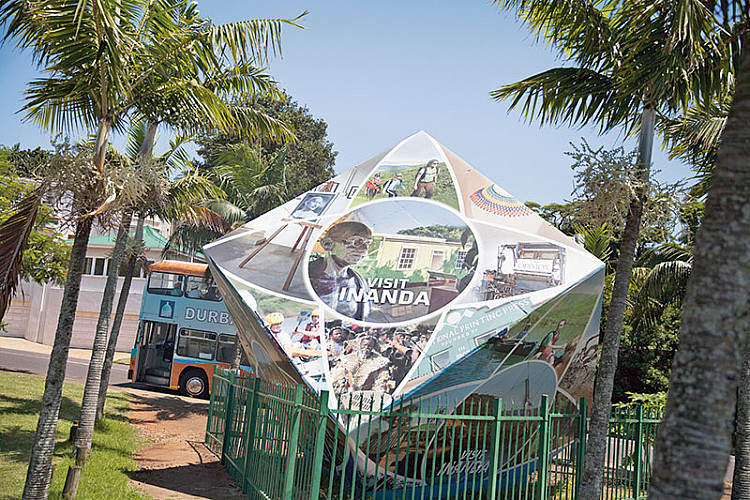
Starting at the Tourist Information Centre at North Beach, the bus moves along the beachfront towards South Beach and uShaka Marine World. You will spot some of the oldest buildings in the city, which were used as hostels for people working at the harbour when it was known as Port Natal. After cruising along the old Victoria Embankment (now called the Margaret Mncadi Avenue), the bus goes to the heart of Durban Central — passing by the Juma Masjid Mosque (the largest mosque in the southern hemisphere) and the Francis Farewell Square — before leaving the city and making its way to the residential suburbs of Berea, Musgrave and Morningside. The mid-point of the tour is marked by a 15-minute stop at a shopping mall in Morningside, where you could stretch your legs and perhaps have a coffee. When the tour resumes, the guide will point out the presidential house of Jacob Zuma and a couple of other famous residents of the suburb. Once again, there’s an opportunity to get off when you reach The Cube, a viewpoint that overlooks Durban. Finally, the bus heads back towards the north, where you can see the Moses Mabhida Stadium and the Blue Lagoon, before heading back to the beachfront. Despite its diverse array of attractions, it’s baffling that foreign travellers have hitherto focussed on the country’s safari-and-wine circuits at the cost of Durban. With its exotic heritage, year-round summertime, friendly people and fiery food, this seaside city on South Africa’s eastern coast is a sure winner in my eyes.
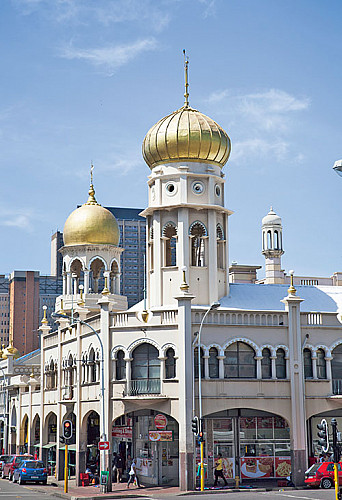
In the footsteps of a great soul
It was during the 21 years he spent in South Africa that M. K. Gandhi developed his strategy of non-violent resistance that is known as satyagraha (‘truth-force’). It made history by becoming one of the most effective political tools of the 20th century. By his own admission, Gandhi’s experiences here were instrumental in making him a political activist. Before he left in 1914, he had already earned the title of Mahatma (‘great soul’). Apart from the Phoenix Settlement that he founded, and which now houses a museum that is a must-see for tourists, here are a few other spots that still bear imprints of his footsteps:
1. Old Court House Museum
The oldest public building in Durban’s CBD, this is where he was asked to remove his turban when he visited to familiarise himself with the courts of South Africa. He refused to do so, on the basis that removing his headgear was a sign of disrespect towards India, and left. There is a historical archive of Gandhi’s images here.
2. Pietermaritzburg Station
When Gandhi had to travel to Pretoria for the court case, though he held a first-class ticket, he was ordered to move to a third-class compartment because of his race. When he objected because he had a valid ticket, he was evicted and had to spend the night in the waiting room. There’s a plaque here that recounts this incident that changed the course of his life.
3. Gandhi statue
On Church Street in Pietermaritzburg stands a bronze statue of Mahatma Gandhi. It was unveiled by Archbishop Desmond Tutu in 1993 to commemorate the centenary of Gandhi’s arrival here.
Local legend
In the 19th century, the Zulu warrior king Shaka conquered all the groups in Zululand and united them into one powerful Zulu nation. Recruiting young men from all over his kingdom and training them in his own characteristic warrior tactics, he unleashed widespread violence and displacement. During his 12-year reign, however, he created one of the mightiest empires in the history of the African continent. It was while he ruled, in the year 1824, that a European settlement began in the area that is now Durban. Initially named Port Natal, the settlement was founded by merchants from the Cape Colony under the leadership of Henry Francis Fynn — who reached a contractual agreement with King Shaka, which authorised them to establish a trading station. In 1835, the town was named Durban after the then Cape Governor, Sir Benjamin D’Urban.
Curried flavour
The bunny chow, which speaks volumes about the city’s Indian influence, is a dish that’s believed to have originated in Durban. One story has it that a restaurant run by people known as Banias (an Indian caste) first created the scooped-out bread and curry dish at a restaurant-cum-cafe called Kapitan’s on the corner of Victoria and Albert streets in Durban. The food was a means to serve take-away to excluded people. During the apartheid regime, Indians were not allowed in certain shops and cafes and so the shop owners found a way of serving the people through back windows. This was an easy and effective way to serve the workers. Another story opines that the origin of this hand-held dish was due to Indian golf caddies not being allowed to carry cutlery during apartheid. Today, restaurants and cafes serve bunny chow stuffed with beef, chicken and prawn curry too. We sampled ours at the People’s Park Café, Panorama Bar at the Elangeni hotel and the House of Curries on Florida Road. A good accompaniment to this lip-searing and messy (it’s eaten by hand) dish is beer.
Flock to Florida Road
With neon lights announcing some of its popular hang-outs, Florida Road beckons the thirsty traveller. While its sidewalk cafes are ideal for quick refreshments after shopping in the boutiques during the day, tourists and locals flock to the tree-lined avenues at night. Art lovers could take a detour to the African Art Centre nearby before unwinding. Historic architecture and the warm vibe that pervades the area, thanks to the music and the welcoming lighting, call out to the trendy and well-heeled crowd that wants to see and be seen. Among the popular restaurants are Taco Zulu (Mexican-inspired cuisine) House of Curries (bunny chow, authentic Indian curries and roti) and Mamma Luciana’s (Italian fare). The bars and clubs stay open until the wee hours, and you could choose to bar-hop or stick to the one that fits your mood — whether laidback, bohemian, or sophisticated.
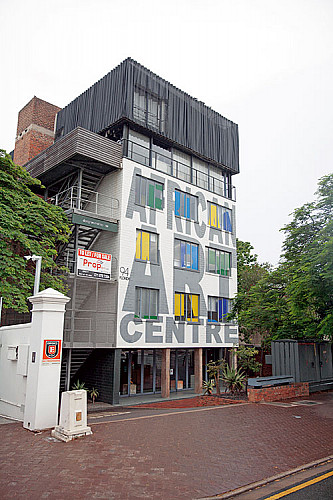
Related posts from Verve:
Verve Trending
Sorry. No data so far.
us on Facebook to stay updated with the latest trends

